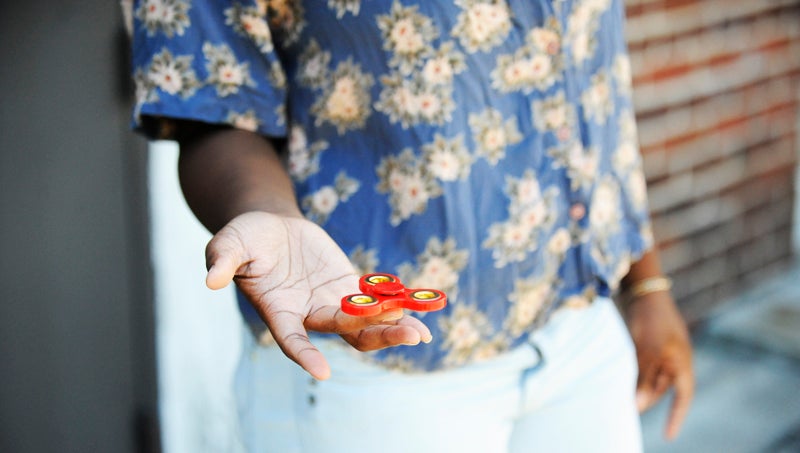Fidget spinners: Assessing pros and cons of the latest craze
Published 7:29 pm Friday, May 26, 2017

- HELP OR HURT?: Fidget spinners have taken younger generations in America by storm, and it is no different in Beaufort County. Some area schools have banned students from using them during school hours. (Caroline Hudson/Daily News)
Listen closely, and you might hear the soft hum of these bright-colored items. Some play music; others light up when spun.
Fidget spinners have recently exploded in popularity among younger generations, from elementary school to college. The same is true for students in Beaufort County.
Fidget spinners are relatively easy to find, from gas stations and Wal-Mart, to drug stores and Amazon.com, but stores are also struggling to keep them in stock. Most retailers sell them for less than $5.
When fidget spinners first hit the market, some reports hailed them as a way to help children with autism, anxiety and attention deficit/hyperactivity disorder.
Medical professionals aren’t so sure.
“One thing people often report is that fidgeting with an object in the hand helps them to stay focused when doing a long task or sitting still and attentive in a long meeting,” an Associated Press article reads. “Psychology research about sensation seeking tells us that people often seek to adjust their experiences and their environments so that they provide just the right level of stimulation.”
For students with ADHD, having that side stimulation from fidgeting could allow the brain to focus on the main task at hand. It’s the same idea as clicking a pencil or tapping a foot. Users hold the fidget spinner in the center and push one of the blades to make it spin. The item requires hand-eye coordination to keep it balanced and spinning.
While psychologists often recommend stationary objects, such as stress balls, to help patients find “the right level of stimulation,” fidget spinners are different in that they are moving objects.
“Balancing a moving object really requires keeping an eye on it, and doing tricks is a lot of what makes the spinners fun,” according to the AP article.
Because of this ongoing movement, along with colors and lights, some educators view them as more distracting than helpful during school hours.
“I understand the primary purpose of such items is to help students who experience symptoms of ADHD to help keep them on task. Unfortunately, these are now being marketed as a toy and used as such,” John Small Elementary School Principal Kelly Makepeace said. “Fidget spinners have created a huge distraction within the classrooms throughout our building. It distracts the teacher while she is teaching, and the students while they are playing with their own or watching others spin.”
Makepeace said this led the school’s administration to ban fidget spinners, the only exception being if a student has a doctor’s referral to use one for medical reasons.
“In that case, the exception for the use of the fidget item will be placed in the IEP or 504,” she said.
Dr. Don Phipps, superintendent of Beaufort County Schools, said he was aware that P.S. Jones Middle School had also banned fidget spinners. Bath Elementary School may do the same.
Phipps said there has yet to be a system-wide ban of them.
Ten-year-old Teniyah Brown said he first found out about fidget spinners from his friends. He now owns nine of them.
Brown said he thinks they can be helpful when it comes to concentration, and they help him personally concentrate in the classroom, although it may not be the same for his peers.
“Most of the kids in my class got fidget spinners, and they seem to concentrate pretty well,” Brown said. “I know some people who just want them for fun and attention.”
Trenyce Waltower, 14, also said fidget spinners are a good way for her to concentrate in school or at other times.
“They help you concentrate when the teacher’s talking to you,” she said.
Waltower said she first discovered fidget spinners on Instagram, and she read reports on how students with autism could benefit from them. Then, it became a trend.
“About a week later, all the kids had them,” she recalled.
Waltower said she can understand how fidget spinners are a distraction, especially the ones with bright colors and lights, but for her, there are benefits.
According to the AP report, “Therapists tend to focus more on results than theoretical findings. They use what gets results and throw out what doesn’t, so practical experience suggests these toys may help kids.”
The bottom line? Only time will tell.





